Day: 24-29 Km travelled: 42.54km Steps: 65,900
September 30th – October 8th, 2017
A major advantage to visiting London, an expensive destination for any backpacker, is that most national museums are free! During my previous visit years ago, I had not had the opportunity to visit these world-class museums – I had been too busy visiting all things Queen Elizabeth related (don’t judge!).
This time, I was blessed with the luxury of time. Having somewhat chaotically crisscrossed France and visited 13 different places in 21 days, I desperately needed to catch my breath. My adventure up until then had left me with a jumble of emotions that needed sorting out and why not do that in London? I was planning on staying in London for over 10 days (technically 12, counting travel days), having extended my stay when I realized I would otherwise have to travel over Canadian Thanksgiving, something I would certainly not be thankful for.
There is a plethora of things to visit in London: museums & galleries, historical sites, palaces and castles not to
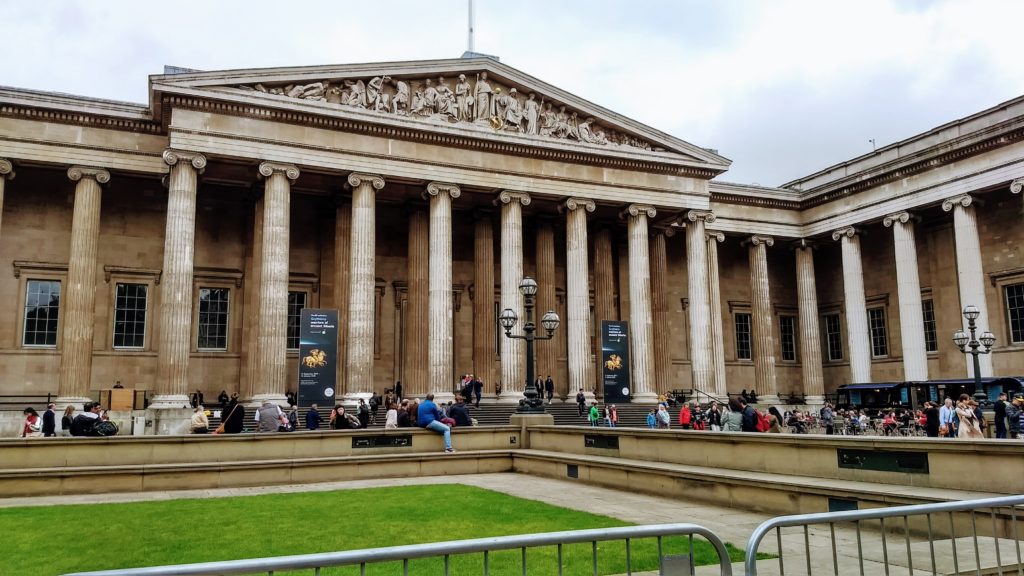
mention taking in a bit of theatre in the West End or even exploring different neighbourhoods such as Chinatown, Soho, South Kensington and all they have to offer. I chose a purpose slower pace, visiting one major attraction a day and relishing in late morning starts and afternoon strolls in the unusually dry London streets.
The world-renowned British Museum was the first on my list. It is one of the world’s largest and most comprehensive museums, with its permanent collection numbering over 8 million works from all continents and over almost all of humanities existence.
A public museum (situated at the same site as it is today) since 1759, it collection grew concurrently with the expansion of the British Empire. One could spend hours if not days amidst such history! There really is something for everyone. Some of my highlights include:
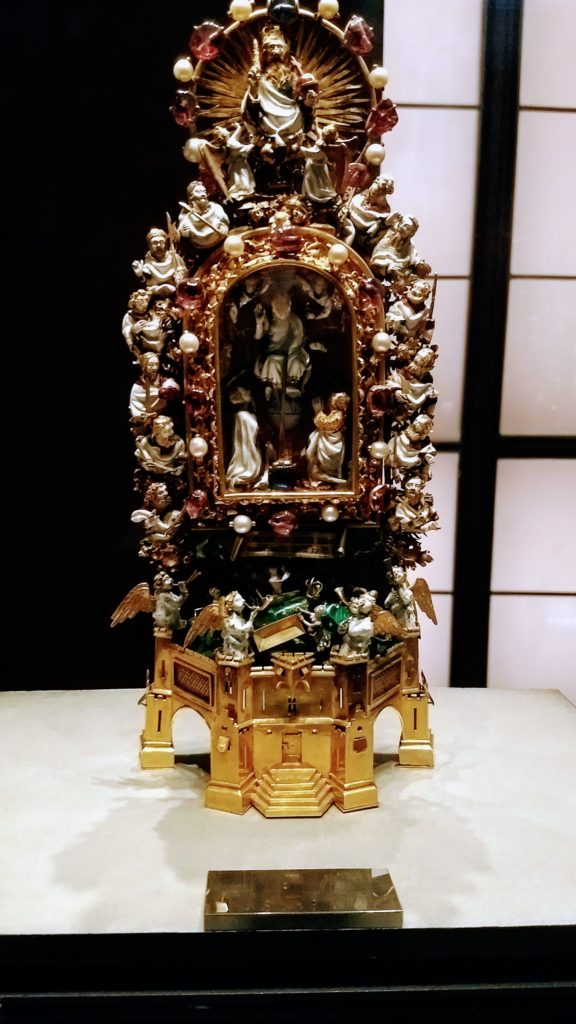
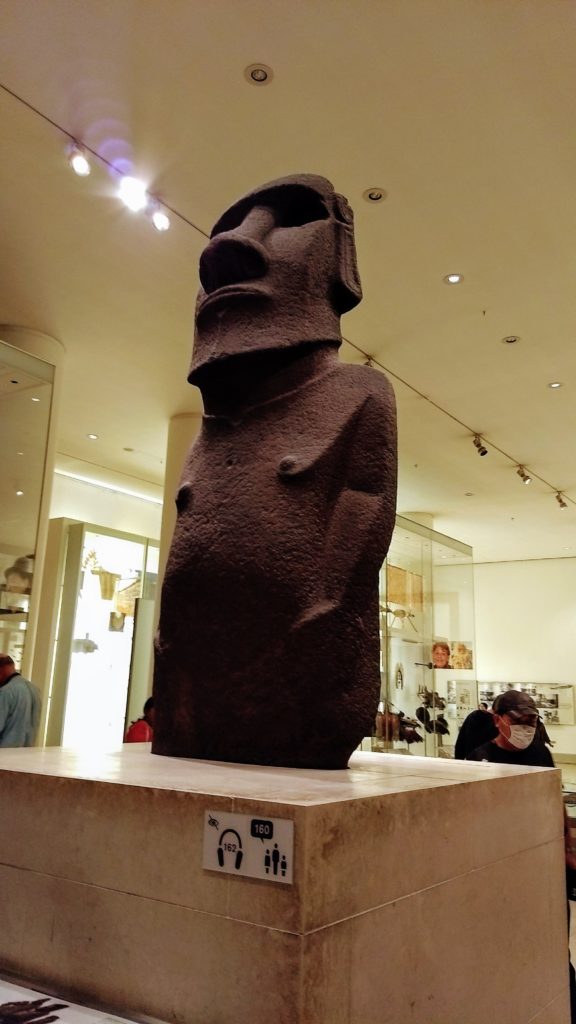
The Holy Thorn Reliquary (left); circa 1400. This reliquary is quite a gem, make them many gems! It is made out gold with embellishments of blue, green and red enamel, rubies, pearls and sapphires!
‘Easter Island statue’ (right): officially known as Hoa Hakananai’s (meaning lost or stolen friend) / Moai (an ancestor figure), dates back to the years 100-1200 and has been a part of the museum’s collection since 1869 when it was brought back from the British expedition to Rapa Nui (Easter Island in the Pacific Ocean) and gifted to Queen Victoria.
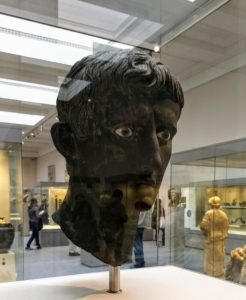 The Meroë Head of Augustus: In the museum’s collection since its excavation in 1910, this bronzed statue (only the head remains today) was likely crafted sometime after Augustus became the sole ruler of the Roman Empire in 27 BC, following the civil was that ensued after Julius Caesar’s assassination. It is remarkable that this head has survived intact for all this time!
The Meroë Head of Augustus: In the museum’s collection since its excavation in 1910, this bronzed statue (only the head remains today) was likely crafted sometime after Augustus became the sole ruler of the Roman Empire in 27 BC, following the civil was that ensued after Julius Caesar’s assassination. It is remarkable that this head has survived intact for all this time!
The Rosetta Stone: Quite easily the most popular artefact in the museum.
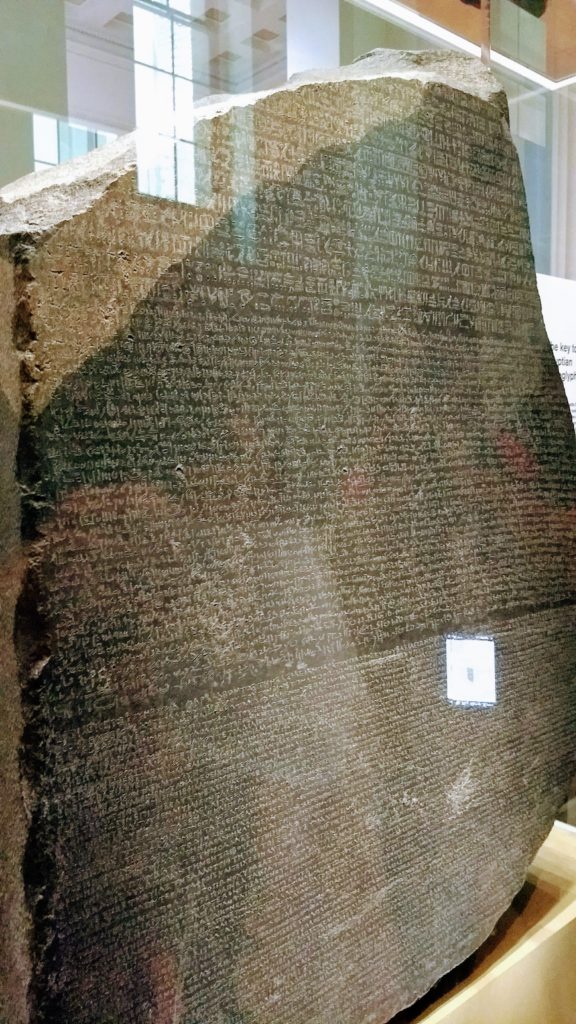
One must wait ones turn to view it up close, a la Mona Lisa! Discovered in 1799, it proved to be the key to deciphering Egyptian hieroglyphs. Dating from 196 BC during the Ptolemaic dynasty (Ptolemy V), it contains a decree written in Ancient Egyptian using hieroglyphic script, Demotic script and ancient Greece. At the time of its discovery, no one had been conclusively able to decipher hieroglyphic language. As historians were able to read the other languages, they now had a sort of codex to translate Ancient Egyptian.
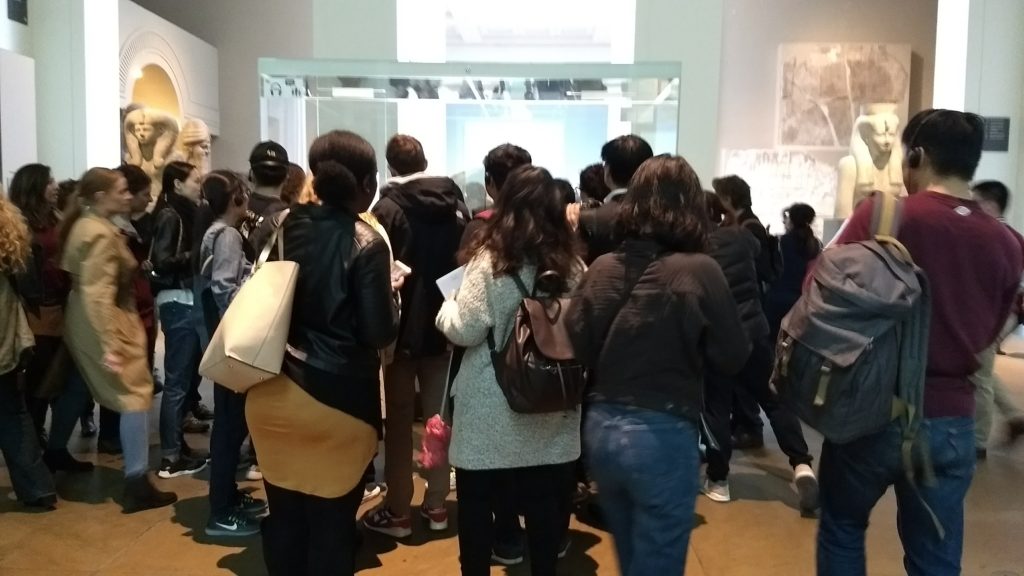
Patiently waiting my turn….
Assyrian Lion Hunt reliefs: Dated to 645 – 635 BC, these relief represent the ancient ‘sport of kings’ – lion hunting. These carvings illustrate the sporting exploits of the last great Assyrian king, Ashurbanipal (668-631 BC) and were created for his palace at Nineveh (in modern-day northern Iraq).

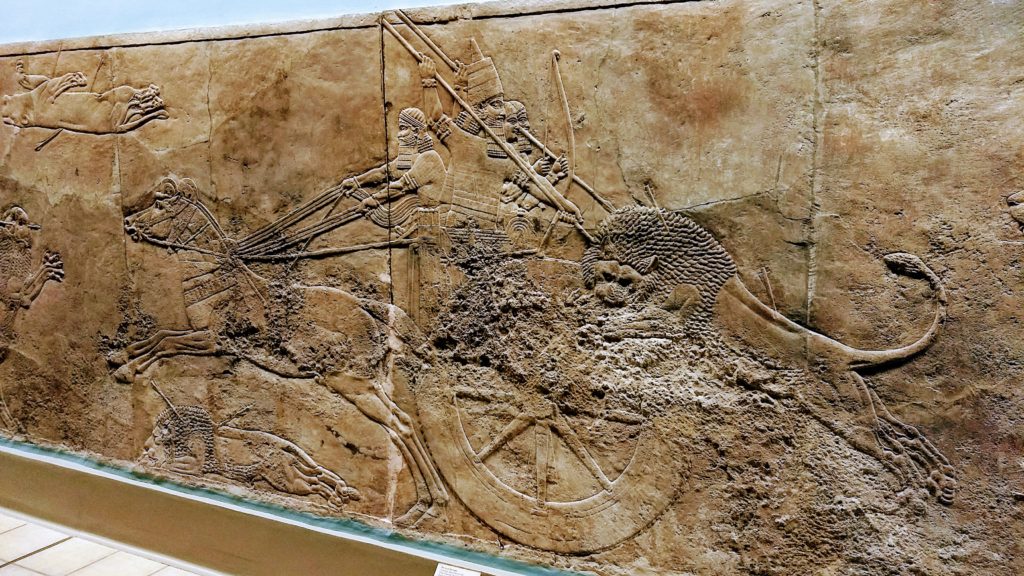
Parthenon sculptures: Likely the most controversial item in the collection. Removed from the remnants of the ancient Greek Parthenon in the early 1800’s (apparently with official permission from the ruling government of the time), these works have stirred strong objections over the years. Many insist a return to Athens as their rightful place in history, however the museum’s stance is that to preserve these pieces, that is no longer a plausible option. The British Museum website explains best these amazing archeological wonders: “The Parthenon in Athens has a long and complex history. Built nearly 2,500 years ago as a temple dedicated to the Greek goddess Athena, it was for a thousand years the church of the Virgin Mary of the Athenians, then a mosque, and finally an archaeological ruin. The building was altered and the sculptures much damaged over the course of the centuries. The first major loss occurred around AD 500 when the Parthenon was converted into a church. When the city was under siege by the Venetians in 1687, the Parthenon itself was used as a gunpowder store. A huge explosion blew the roof off and destroyed a large portion of the remaining sculptures. The building has been a ruin ever since.” It is simply outstanding, wherever they may reside today, that these sculptures still exist! The Greeks have long been known for their exquisite detailing in marble sculptures, however, sadly not may remain today (most are roman replicas). It was truly a privilege to walk amongst such wonder!
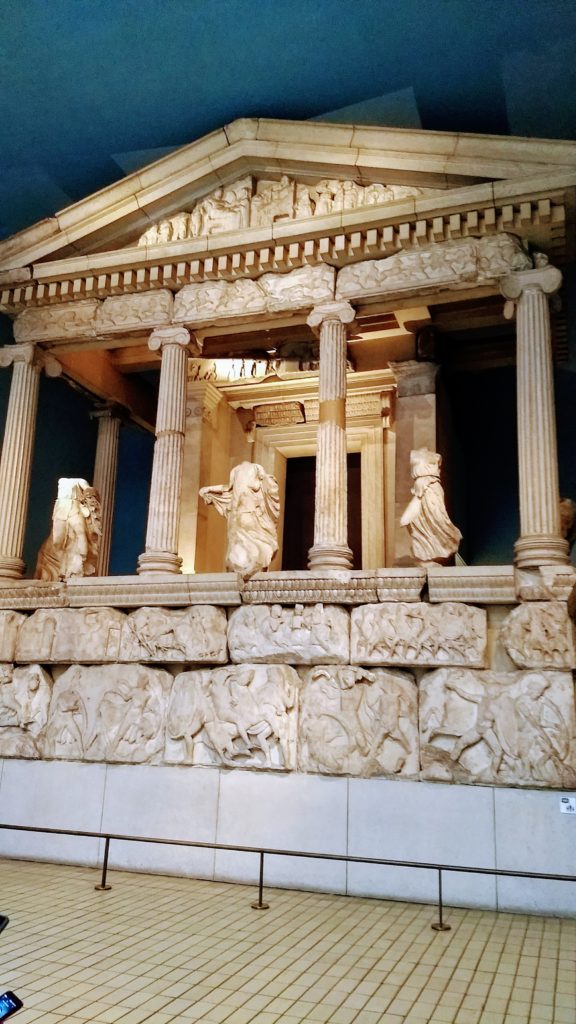
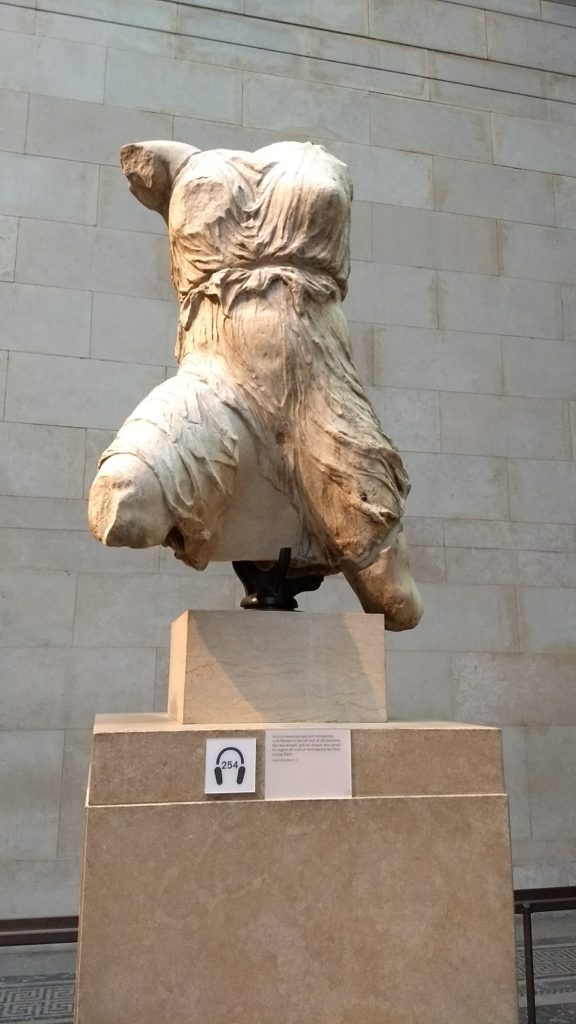


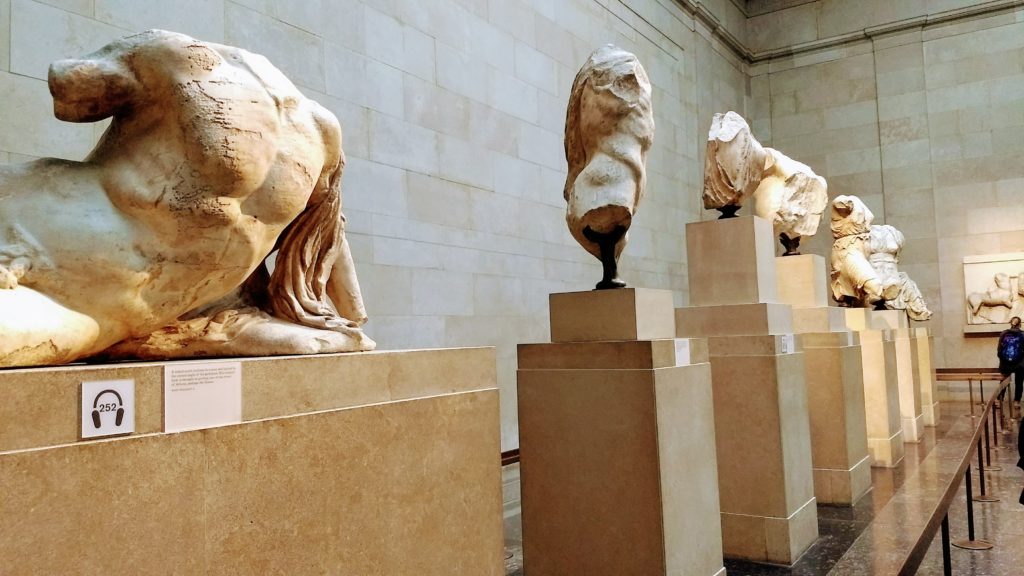
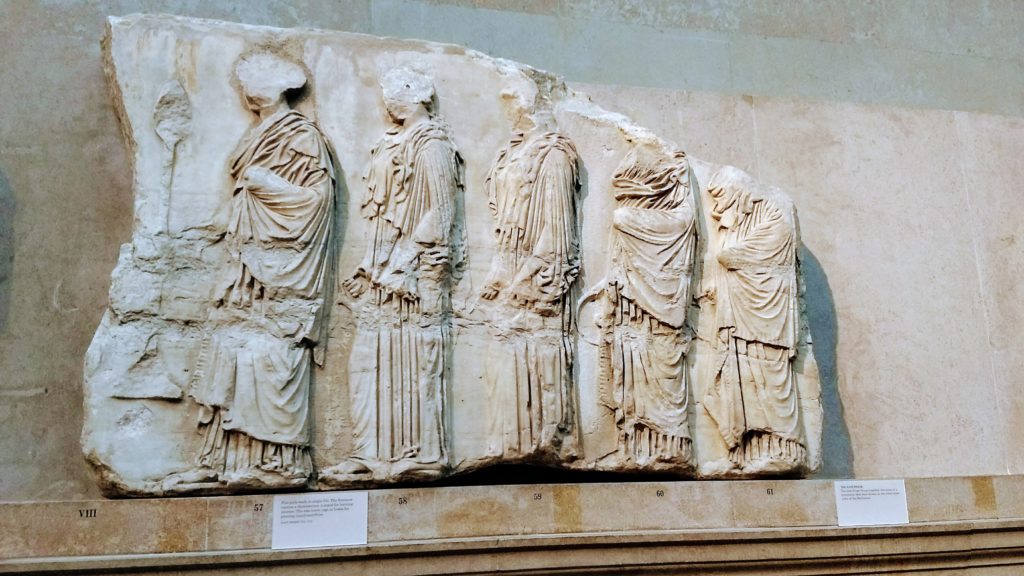
These are just some of the gems awaiting visitors at The British Museum! I left, my head filled with knowledge and my spirits getting lighter by the minute. All in all, a good day!
